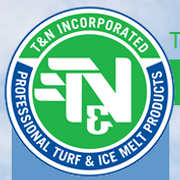A Guide to Using Fertilizer in the Fall

Your yard looks its best when you provide it with the nutrients and moisture that it needs. Fertilizing the grass is among the most vital steps that you can take to promote its health, vitality, and appearance. While it may seem that lawn care is predominantly a warm-weather ritual, it’s actually best to use fertilizer in the fall. Here’s what you should know.
Why Is Fall Fertilizing Beneficial?
Fertilizer is enriched with the key macronutrients that the grass needs to thrive. Nitrogen encourages quick growth, while phosphorus helps establish roots and stimulates seed production. Finally, potassium helps strengthen the grass so it’s more resistant to diseases and drought.
It also contains several micronutrients, including zinc, copper, iron, boron, and manganese. All of these play vital roles in helping your lawn grow strong, healthy, and viable. When you fertilize, the grass is properly nourished and grows in thick. As a result, the soil remains where it belongs instead of running off the property.
Since grass pulls its nutrients from the soil, this helps your yard look lusher and healthier for years to come. Thick grass is also less vulnerable to general stress from weight and foot traffic. You can enjoy your lawn regularly without worrying about damage due to activity or other external elements.
Why Apply It in the Fall?
 When you apply fertilizer during fall, it gives the roots enough time to take hold so that the grass truly thrives by springtime. It also gives them a head start on developing their strength, so by the time winter arrives, they’re strong enough to sustain exposure to freezing temperatures, snow, and rain.
When you apply fertilizer during fall, it gives the roots enough time to take hold so that the grass truly thrives by springtime. It also gives them a head start on developing their strength, so by the time winter arrives, they’re strong enough to sustain exposure to freezing temperatures, snow, and rain.
The early morning dew so typical of fall mornings also encourages better absorption. For the best results, apply it at least three weeks before the first frost, which in Warren County typically falls around the second week of October.
What Type Should You Use?
Fertilizers are categorized by formulas according to their macronutrient content. A common option is 5-10-5, which refers to nitrogen-phosphorus-potassium. If you fertilize in September, use a product with an especially high dose of nitrogen to stimulate growth and prepare it for the months ahead, such as 20-8-8.
Then, in late October or early November, apply another dose, this time with a higher phosphorus content, to give the roots a boost through the end of fall and into winter.
If you seek high-quality fertilizer for your landscape in Warren County, MO, turn to T & N in Foristell. Serving the community since 1988, the company offers a wide range of professional turf products, including farm care and weed control solutions. Visit the website for more information or call (636) 673-2505 to speak with a representative.
About the Business
Have a question? Ask the experts!
Send your question

